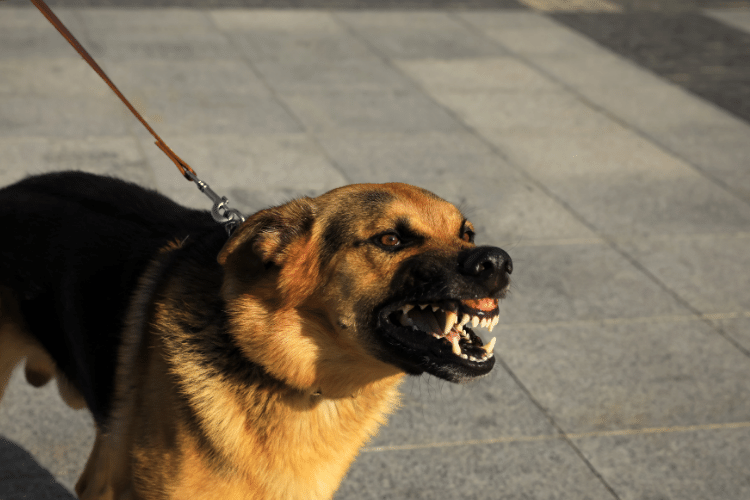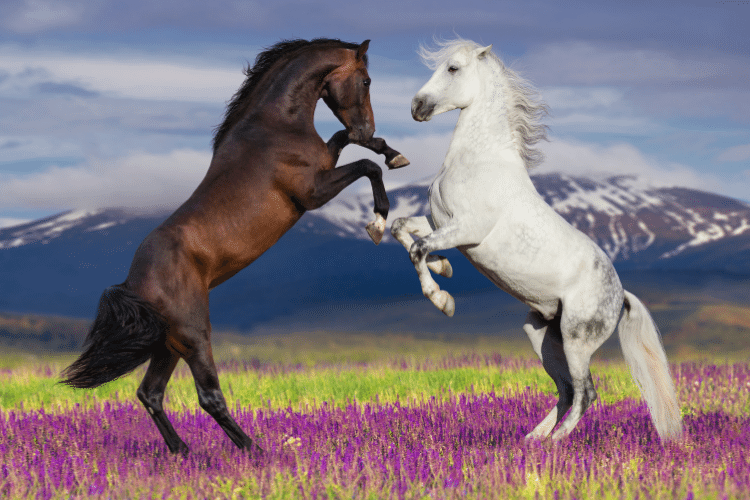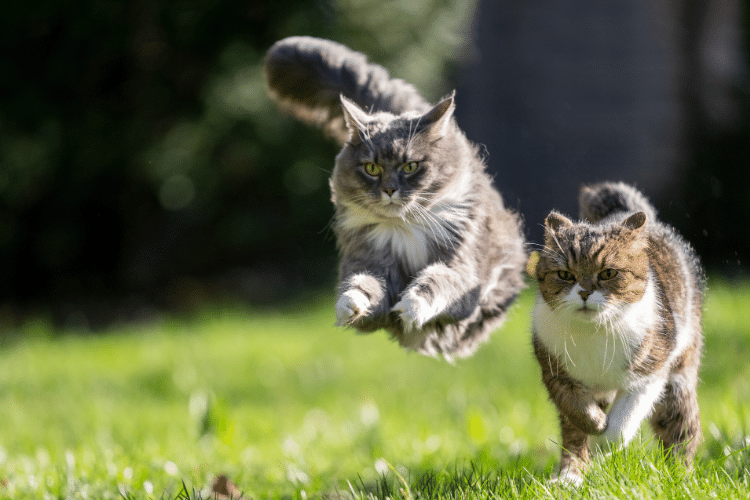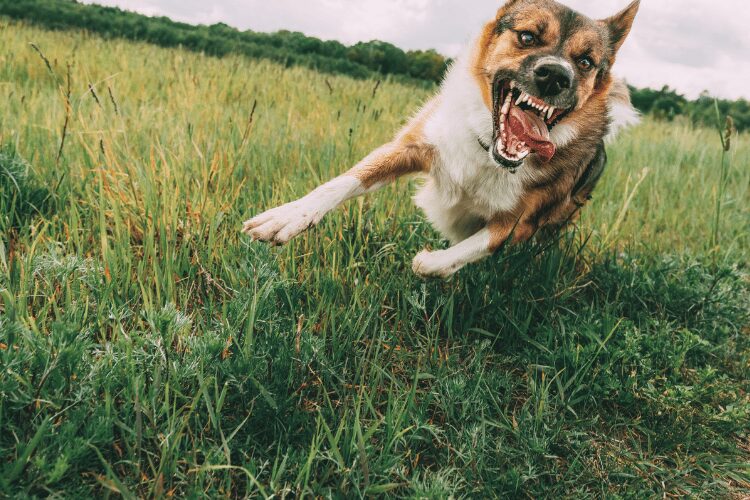
There are many various kinds of pets, from cats to snakes, but dogs are unquestionably the first thing that springs to mind when the word “pet” is mentioned. Do you know that there are 450 different dog breeds in the world, 25 of which originate in India, a nation renowned for its delectable cuisine, festive celebrations, spiritualism, and the Taj Mahal, one of the seven wonders of the world?
Despite the fact that dogs have been people’s closest companions, devoted creatures, and guardians, there are a number of risky dogs in the world that become aggressive towards people and other small animals as a result of their environment, inadequate socialization and behavioral training.
Most of them are petted out of security concerns, while others are petted because of their love for dogs, which ends up in an unbreakable bond between the dogs and those who own them. So, depending on breed purpose, height, weight, temperament, strength, and biting force, here is a list of the Top 10 Most Dangerous Dog Breeds in India that require expert handling and care if you plan to pet any of them.
- Bully Kutta
- Rajapalayam Dog
- Gaddi Kutta
- Kombai Dog
- Rampur Greyhound
- Kanni Dog
- Mudhol Hound
- Bakharwal Dog
- Gull Dong
- Chippiparai Dog
1. Bully Kutta:
One of the most powerful, biggest, and roughest dogs, which also takes place in the list of most dangerous dog breeds in India is the Bully Kutta, also known as the Indian Mastiff. Bully Kutta is a molosser-type dog or an Indian breed of large-size mastiff and its name translates to “Heavily wrinkled dog.” Bully originates from the word “Bohli,” which has the meaning of heavily wrinkled, and kutta means dog in Hindi/Urdu language. They are additionally known as Bulli Mastiffs, Alangu Mastiffs, Pakistani Bully, and Sindh Mastiffs which you can find in Thanjavur of Tamil Nadu, some northern regions, and some portions of Pakistan, primarily sindh. Due to their versatility and tolerance, they are ideal for Indian weather conditions.
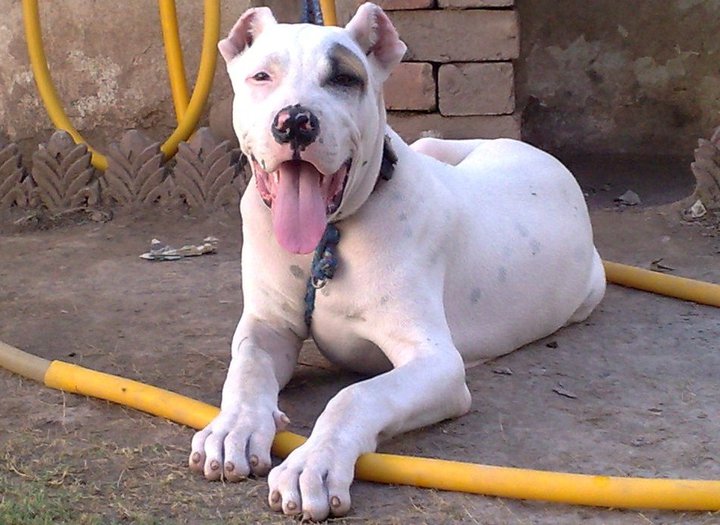
Bully Kutta has the nickname “Beast of the East” due to their strong-boned, big head, and muscular physiques with abundant energy and are bred to be excellent hunters and to defend their masters from wild animals. It is widely acknowledged that Akbar, the great Mughal emperor, kept Bully Kuttas for both defense and hunting. Early socialization with people and other dogs is preferable because of their fighting intuition and complete professional training is needed to effectively guide this breed.
In spite of being socialized Bully Kutta could be dangerous after a certain age that’s why they are nicknamed as “beasts”, and even friendly battles with other dogs can swiftly turn deadly. (Warning: It is not advised to pet a Bully Kutta in a home with smaller dogs, So it’s clearly “NO” to kids, and you should be careful around them)
- Height – Male 75-110 cm and Female 70-92 cm
- Weight – Average ranges between 64 to 95 Kg
- Colour – Black, white, brindle, fawn, red and harlequin with thick, dense, and small fur
- Puppy price – Range between Rs 5,000 to Rs 20,000
- Life span – 10-14 Years
- Bite force – 345-400 PSI (respective pounds of force applied per square inch)
- Temperament – Alert, active, loyal, fearless, protective, intelligent, ferocious, ideal guards, and devoted but aggressive due to its dominating personality.
2. Rajapalayam Dog:
The Rajapalayam dog, sometimes referred to as the Polygar Hound or Indian Ghost Hound, comes in at number two on our list of the most dangerous dog breeds in India. Rajapalayam, a town in the Virudhunagar district, is where the name of this Southern Indian dog that is native to Tamil Nadu comes from and it served as a companion dog for the royal families. Owning a Rajapalayam dog was once considered to be wealthy and they are one-man dogs that only listen to their owner’s command and don’t take others.
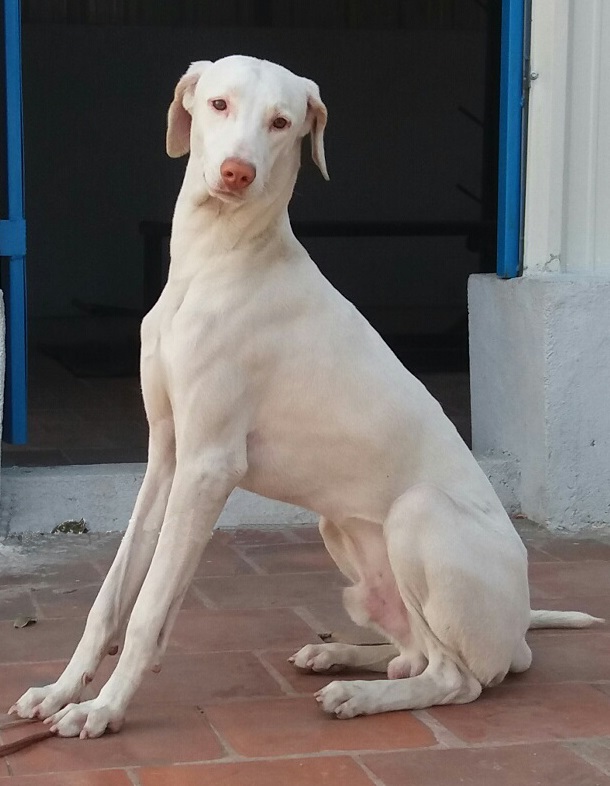
They are a well-known breed of dog in India and in an effort to raise awareness, the India Post has published postage stamps with the image of the Rajapalayam dog. Rajapalayam, a multi-purpose dog trained to guard owners and properties as well as hunt wild boar and hares solely with their sight and speed. Additionally, Rajapalayam dog is a sighthound that must be kept in vast-open areas and they are deadly predators killing larger animals in a matter of minutes with the help of their powerful, hefty muscles.
When threatened, they express violent, aggressive tendencies toward strangers without much notice and dislike getting touched and handled by strangers. Because of their strong hunting intuitions, Rajapalayam dogs don’t get friendly with other pets (like cats) or strangers, so it’s crucial to socialize them from an early age, and it requires professional training as they develop. Surprisingly, they have never attacked anyone fatally, but once it was reported that four Rajapalayam dogs killed a tiger to protect their owner. (Warning: It’s clearly a “NO” to children and avoid touching them unless you’ve gotten to know them prior)
- Height – Male 55-72 cm and Female 38-70 cm
- Weight – Average ranges between 14 to 32 Kg
- Colour – White
- Puppy price – Range between Rs 9,000 to Rs 20,000
- Life span – 10-12 Years
- Bite force – 200-400 PSI (respective pounds of force applied per square inch)
- Temperament – Affectionate, loyal, fearless, intelligent, dedicated, great guards and highly devoted to its owner.
3. Gaddi Kutta:
Gaddi kutta dogs go by a variety of names, including Bhote Kukur, Bhotia, Bangara, Himalayan Mastiff, Himalayan Sheepdog, Indian Panther Hounds, Indian Leopard Hounds, and Mahidant Mastiff; are native to Nepal, and India, now found in the Himalayan regions from Nepal to Kashmir. This breed is robust, has a double-coated layer of thick fur, short drooping ears, and a heavy tail that has been curled over resulting in somewhat larger than the Tibetan Mastiff’s. One thing you should be aware of is that because of their thick coats of fur, these dog breeds cannot endure hotter climates.
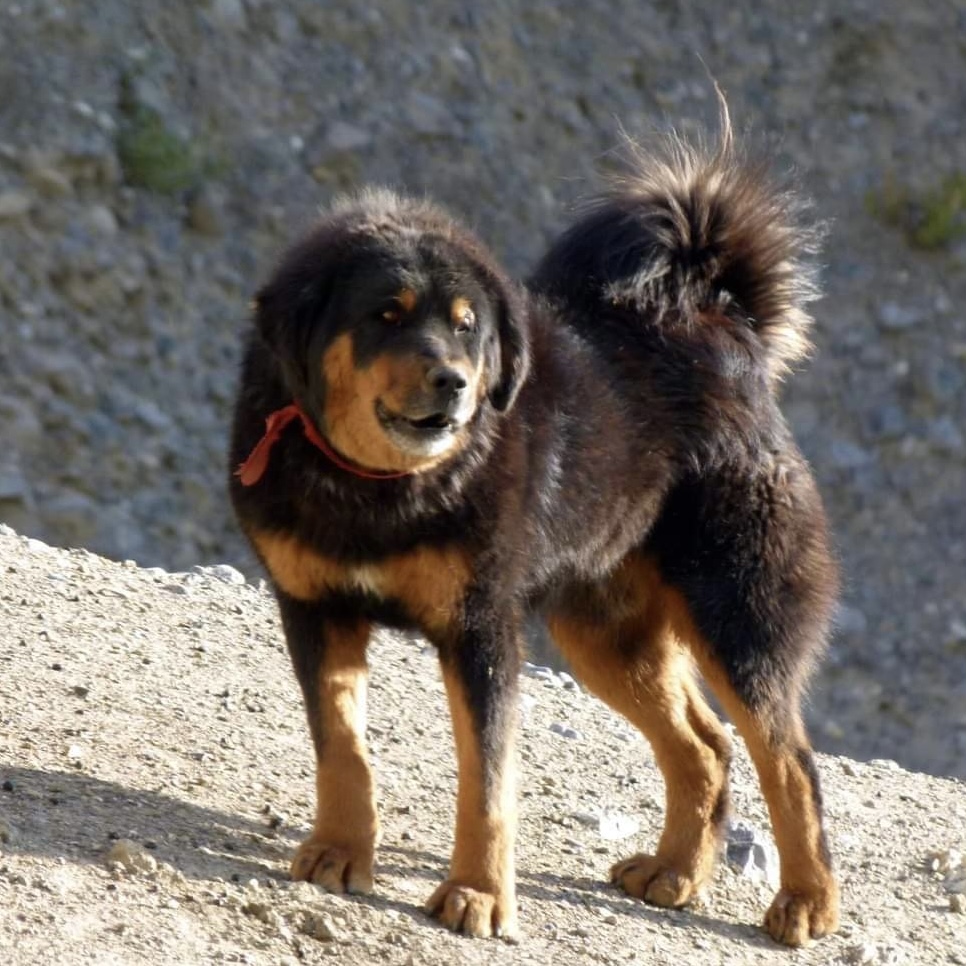
The multi-talented Gaddi Kutta, which was originally bred for hunting, is regularly used by the local shepherds, the majority of whom are Gaddis (they acquired their name from the tribe, and Kutta meaning dog), to herd the cattle and to protect it from various predators such as snow leopards. Unexpectedly, these Gaddi Kutta are skilled natural herders which can intelligently bring stray sheep, yaks, and goats back to their living spaces with little to no guidance or training.
One fully grown male Gaddi Kutta is capable of killing two wolves by itself, which is why it has earned a spot on the list of most dangerous dog breeds in India. Just imagine what would happen if they encountered a stranger or other little animals nearby since they become aggressive in their presence. Their conflicts are particularly upsetting because they literally fight each other to death, putting the Gaddi Kutta in danger and leaving only a small number of them. (Warning: Even if they seem kind and caring toward their owner and family, be cautious around them and it’s a clear “NO” for children as well as pets, in case they are not sufficiently socialized)
- Height – Male 60 to 76 cm and Female 60 to 66 cm
- Weight – Average ranges between 35 to 50 Kg
- Colour – Piebald, fawn, brindle, cream, brown, yellow, black, white and grey with rough and thick coat
- Puppy price – Range between Rs 5,000 to Rs 40,000
- Life span – 10 to 12 Years
- Bite force – 400-550 PSI (respective pounds of force applied per square inch)
- Temperament – Intelligent, calm but aggressive towards strangers, obedient, loyal, protective, territorial, friendly, gentle and stubborn.
4. Kombai Dog:
Kombai dogs are known by a variety of names, including Indian or Tamil Bear Hound, Indian Bore Hound, Indian Bore dog, Polygar dog, and Often stated as Combai dog. These dogs have a reputation for being the best guard dogs because they were raised to safeguard homes and people’s cattle from attacks by wild animals, as well as to defend against harm. Although they are currently endangered, Kombai dogs are still widely used and can still be found in Tamil Nadu, a state in Southern India. This old dog breed, which dates to the fifteenth century, is known to have played very important role in the Marudhu brothers’ rebellion. Because of how much they resemble terrier dogs, the Kombai dog breed is often known as the “Indian Terrier.”
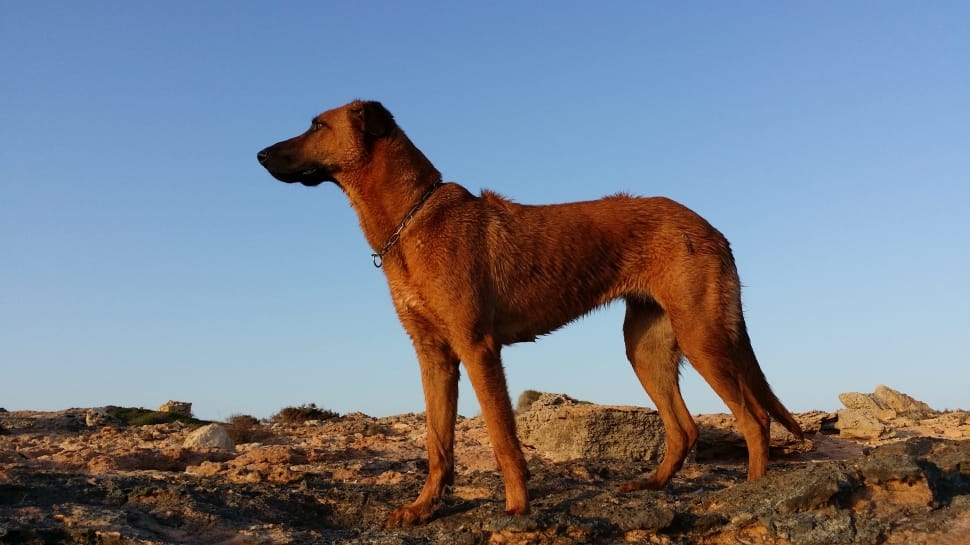
These athletic, strong, and powerful dogs have strong jaws, deep chests, and upright ears which are periodically used for hunting forest buffalos, boar and antelope. Due to their aggression and intolerance, Kombai dogs don’t enjoy the company of other dogs or pets. However, they become extremely protective of the people who own them. They fight strangers, trespassers or other living creatures to death, which is the major reason they are listed as the fourth most dangerous dog breed in India. It is a known fact that a group of Kombai dogs can kill a lion or bear. (Warning: Despite the fact that they make an excellent family dog and are a safe “YES” to kids; be wary if you are around Kombai dogs)
- Height – Male and Female both 58 to 66 cm
- Weight – Average ranges between 15 to 30 Kg
- Colour – Red, brown, and tan with a black mask face and a ridgeline along its back
- Puppy price – Range between Rs 9,000 to Rs 25,000
- Life span – 12 to 15 Years
- Bite force – 190-400 PSI (respective pounds of force applied per square inch)
- Temperament – Immense loyalty, aggressive, territorial, savage, protective, intelligent, alert but laid-back approach.
5. Rampur Greyhound:
The most recognizable native dogs of the Rampur region of northern India, are skilled Rampur Greyhound dog breeds with lofty legs, a lengthy nose, and a narrow torso that creates a muscular physique. Even though they are now rare, regions of Northern India still have them. They are bred for security and hunting and go by the names North Indian Greyhound, Rampur Dog, and Rampur Hound.
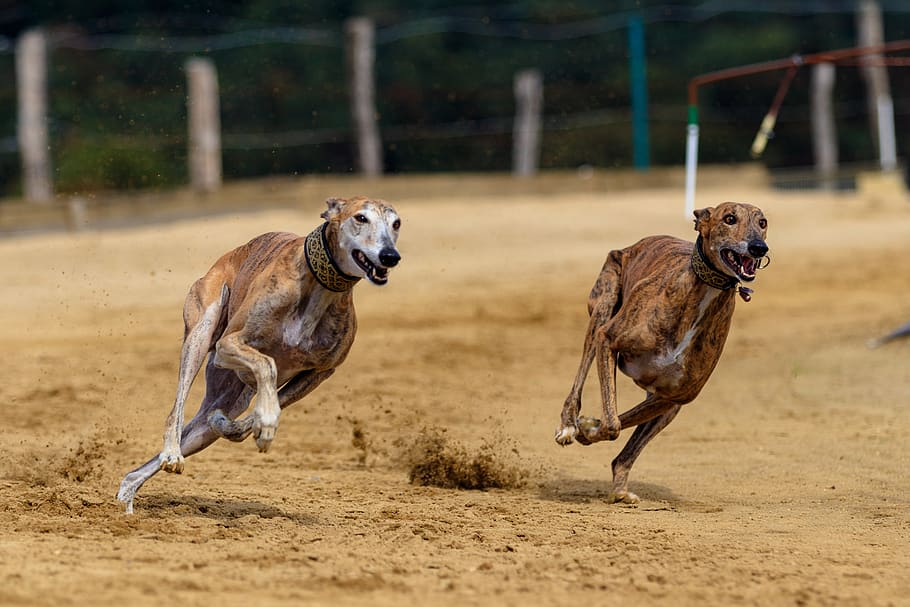
Considered among the top 10 most dangerous dog breeds in India, Rampur Greyhounds have such a strong prey drive that a group of them may hunt down dangerous huge beast cats like tigers, panthers, and even lions. Another interesting fact is, just one Rampur greyhound is able to kill a golden jackal, which was a major issue for Indian villagers. So don’t be startled if they play harshly with other dogs, because of their natural high energy levels. They can run up to 40 miles per hour and have remarkable endurance, which makes it simple for them to hunt animals such as deer, foxes, wolves, and bunnies.
Rampur Greyhounds are known for being able to walk on edges and fences because of their cat-like balance and surprising 270-degree range of vision and these varieties used to be well-liked and the furry companions of choice for Indian royal families, princes, and maharajas. When threatened, they turn dangerous even though they are extremely mindful of their master and their property. (Note: Despite enjoying time with kids and adjusting well to families, they’re excellent one-person dogs and, without proper socialization, they don’t get along with other animals or strangers)
- Height – Male 60 to 75 cm and Female 55 to 60 cm
- Weight – Average ranges between 22 to 32 Kg
- Colour – Black, white, grey, fawn, and brindle with shorthair
- Puppy price – Range between Rs 5,000 to Rs 15,000
- Life span – 10 to 12 Years
- Bite force – 200-400 PSI (respective pounds of force applied per square inch)
- Temperament – Unwavering loyalty, affectionate, eager to please, devoted to their owners, protective, intelligent, alert, and prey-driven.
6. Kanni Dog:
The Kanni dog breed is also known as Maiden’s Beastmaster owing to its ferocious techniques of defending against wild creatures. Kanni, which translates to “pure” in Tamil, is the name given to this breed for its loyalty. These are native sighthound dog breeds from Tirunelveli, Thoothukudi, and Virudhunagar that primarily resemble Greyhounds or smooth-coated Saluki or Mudhol Hound dogs, which are now mostly found in the Southern portion of Tamil Nadu.
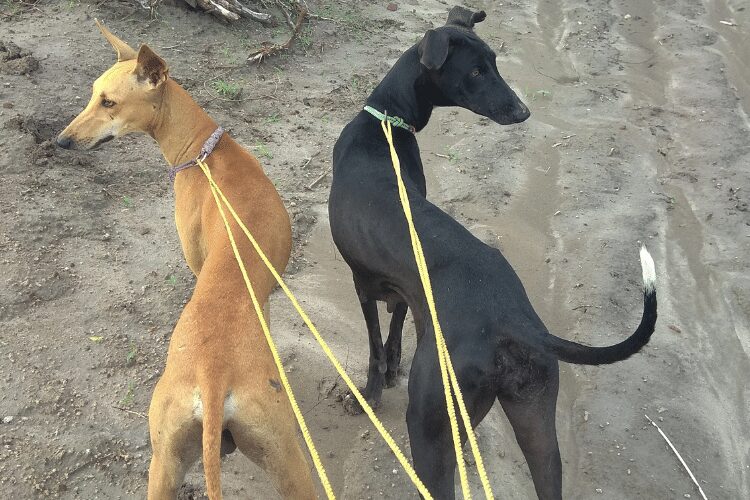
They are bred for coursing smaller animals like bunnies, whereas coursing is a method of hunting, relies on sight rather than scent, and this has led to their position on the list of the most dangerous dog breeds in India. These medium-sized shorthaired dogs are renowned for their stamina and quickness when chasing prey. They have tucked-up abdomens, naturally dropping ears, and half-curved tails. Even though they appear normal, they will actually go to any extent to protect their master and their property, and they are sometimes given as gifts to newlywed women for watching over them.
The Kanni and Chippiparai dog breeds differ slightly from one another. Typically, Kanni dogs are black with tan or sable in colour; In contrast, Chippiparai dogs come in a variety of solid colors. Each color Kanni dog has a distinctive name; The heavily muscled chest and the thin-bodied Paalakanni are cream in colour. Types such as fawn-colored are known as Santhana Pillai, light red are known as Sevalai, dark red are referred as Karum Sevalai, cream white is named as Mayila pillai, pale grey are known as Sambal, and when this breed has brown patches they are known as Pottu Kanni, while black fur is known as Karun Kanni.
- Height – Male 60 to 75 cm and Female 54 to 65 cm
- Weight – Average ranges between 16 to 25 Kg
- Colour – Black & tan, tri-colour with shorthair
- Puppy price – Range between Rs 5,000 to Rs 20,000
- Life span – 14 to 16 Years
- Bite force – 200-350 PSI (respective pounds of force applied per square inch)
- Temperament- Pure loyalty, affectionate, territorial, devoted to their owners, protective, independent, agile.
7. Mudhol Hound:
Mudhol Hound is also known as Caravan Hound, Pissouri Hound, Lahori Hound, Maratha Hound, Pashmina Hound, and in some rural areas, Karwani. These dogs are an Indian sighthound breed that earned their name (Caravan Hound) from the British who often saw them traveling with caravans in Karnataka and also found in Telangana, Maharashtra, and various areas of Andhra Pradesh. Mudhols are physically fit and have been developed for hunting and guarding roles. However, in order to keep up their agility, endurance, and chasing skill—essential for being a great hunter and killing smaller game, such as rabbits and blackbucks, they must engage in frequent exercise.

Mudhols tolerate dogs and children in the family quite well, but not everyone gets accepted by them; if they aren’t properly socialized, they can easily develop an unfriendly or wary attitude toward outsiders. But your Mudhol will be incredibly devoted when you treat them with respect and care. They are especially vulnerable to the chilly and rainy weather because they lack a fat covering. Better than other dogs, they are the most productive animals in the nation while some serve in the Indian military; and, like the Rajapalayam dog, Mudhol Hounds have been featured on postage stamps. (Note: Although they are popular family pets, they are not well suited to apartment living)
- Height – Male 73 to 80 cm and Female 61 to 74 cm
- Weight – Average ranges between 21 to 40 Kg
- Colour – Black, white, brindle, fawn, chocolate or mixed without fat layer
- Puppy price – Range between Rs 5,000 to Rs 15,000.
- Life span – 10 to 15 Years
- Bite force – 200-400 PSI (respective pounds of force applied per square inch)
- Temperament – Fierce, elegant, graceful, immense loyalty, courageous, brave, suspicious, devoted, but high prey-drive.
8. Bakharwal Dog:
The rarest dog breed from India’s Himalayas, the Bakharwal, is peculiar because it doesn’t eat meat; instead, it consumes milk, bread, and other dairy items. Don’t underestimate this breed! These rare historic breed varieties are large-headed, deep-chested, powerful, agile, and have wide shoulders despite feeding on milk, bread, and dairy-related foods. One of the main reasons that these dogs are regarded as dangerous dog breeds in India is because of their huge, mighty bones and tall legs, which are sufficient to defend their cattle from any predators and can fend off mountain lions. Additional names were Gujjar Watchdog, Bakarwali Shepherd Dog, Kashmiri Mastiff, Indian Bakharwal Dog, and Kashmiri Sheepdog. The name Bakharawal is derived from the word Bakri, which refers to goat, since they were bred to guard cattles from predatory animals as well as the property of nomadic tribes (known as the Gujjars or Gurjars in the Himalayas); are now frequently found in some regions of North India, Pakistan, and Afghanistan.
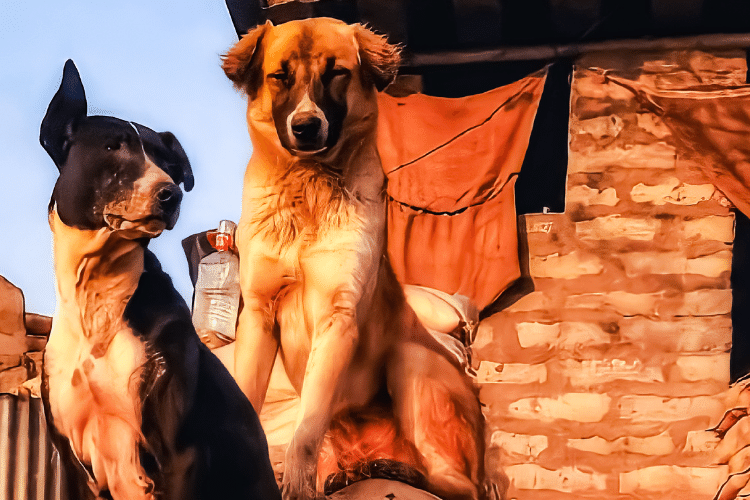
Bakharwal dogs resemble the little version Tibetan Mastiff or the Asian Molosser breed’s slimmer version. These Bakharwal dogs only have one to three puppies a year, which is a major factor in their rarity. Despite being friendly with their human owner and the majority of people, they can become aggressive with other dogs and animals, that’s why you ought to stay away from them. (Note: Give them enough training, physical activity, and sociability before adopting them into your family. As active dogs, they should have access to a spacious backyard where they can wander freely)
- Height – Male 60 to 75 cm and Female 60 to 70 cm
- Weight – Average ranges between 35 to 60 Kg
- Colour – Piebald, black & tan, tri-colour, with a majestic furry coat and plumy tail
- Puppy price – Range between Rs 2,000 to Rs 15,000
- Life span – 6 to 12 Years
- Bite force – 300-400 PSI (respective pounds of force applied per square inch)
- Temperament – Intelligent, maneuverable, aggressive towards strangers, obedient, loyal, protective, brave, alert, and energetic.
9. Gull Dong:
Gull dong, also known as an Indian Bulldog, Pakistani Bulldog, or Bully Gull Terr, is a breed of dog created by crossing pure and elite Gull terriers with Pakistani mastiffs for the purposes of protecting, hunting, and fighting. They are medium-sized dogs that stand taller than most Pakistani dog breeds and are well renowned for their quick speed and tenaciousness. Tiny ears along with short snouts are notable “signature traits” of bulldog breeds and are frequently referred to as Pakistani Bull Terriers as well as Indian Bull Terriers. They are rare but frequently seen in Pakistan and India. Gull Dong exhibit the toughness needed for fighting and the awful fact is they are one of the dog breeds that participate in illicit fights. Due to their violent nature, they are now among the most dangerous Indian dog breeds which have been prohibited by the Housing authority of New York and the Cayman Islands.
(Warning: Despite their loyalty, they are violent against others and are not ideal for families. Therefore, they require extensive professional training and early, appropriate socialization from the start in order to live together with other pets)
- Height – Male 75 to 105 cm and Female 75 to 85 cm
- Weight – Average ranges between 25 to 40 Kg
- Colour – Black, white, grey and brindle with very short and dense smooth fur coat
- Puppy price – Range between Rs 6,000 to Rs 35,000
- Life span – 10 to 14 Years
- Bite force – 305-400 PSI (respective pounds of force applied per square inch)
- Temperament – Independent, sturdy, loyal, alert, fast moving, powerful, strong-willed and energetic.
10. Chippiparai Dog:
In Tamil Nadu’s southern regions, such as Thoothukudi, Virudhunagar, Tirunelveli, and Madurai, you can find these large, willowy, and attractive Chippiparai dogs. The breeds were originally developed to hunt small game like bunnies and hogs, yet they occasionally have the ability to take down larger animals like deer, also the name Chippiparai, came after a palce which is located close to the Madurai district. They appear slender and skinny with ribs that are clearly evident, a tucked-in midsection, and a narrow head that can withstand the extreme heat of India. The “Kanni dog” (virgin) and “vettainaai” (hunting dog) are other names for Chippiparai dogs. They are mainly used for racing and escorting India’s upper classes since hunting was outlawed in the country.
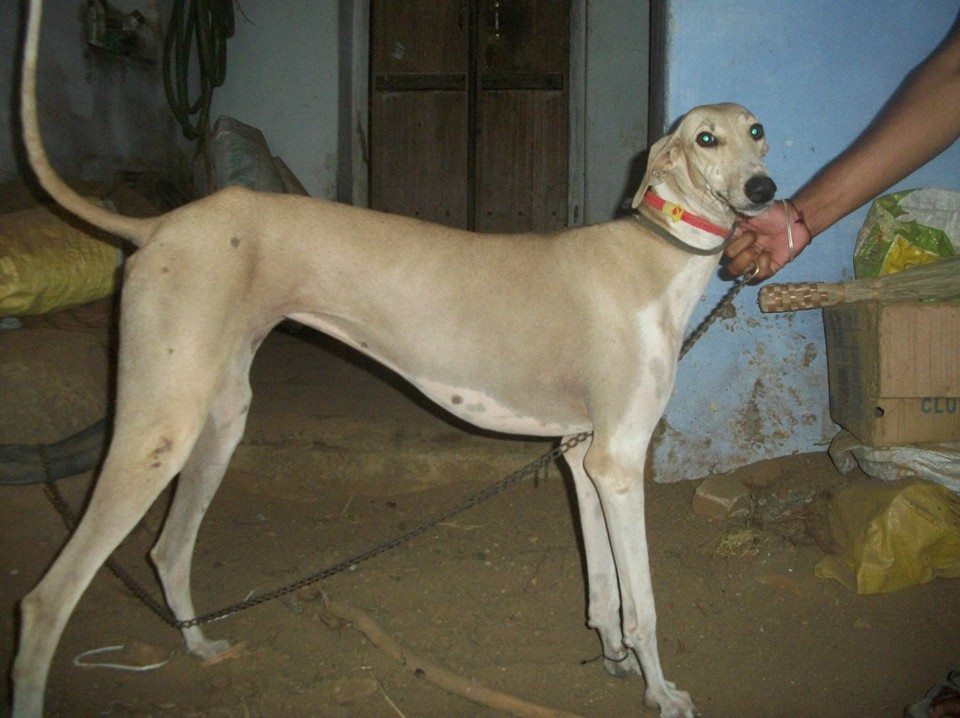
Similar to how the Akita Inu is considered a national treasure of devotion and dignity in Japan, the Chippiparai is the pinnacle of loyalty and respect in India. Color changes, as pointed out in the brief description of the kanni dogs, are the sole difference between Kanni and the Chippiparai. (Note: Chippiparai dislike being isolated and need a lot of care, exercise, and professional teaching; if you are not a member of their family, be extra careful when around them)
- Height – Male 60 to 73 cm and Female 54 to 70 cm
- Weight – Average ranges between 15 to 32 Kg
- Colour – Fawn, silver-grey, and grey with very short and exceptionally smooth lighter coat
- Puppy price – Range between Rs 5,000 to Rs 20,000
- Life span – 12 to 15 Years
- Bite force – 200-300 PSI (respective pounds of force applied per square inch)
- Temperament – Obedient, loyal, protective, alert, dignified and energetic.
There are several more dog species that are native to India, including the Indian Spitz, Pariah dog, Kaikadi, Taji, Pandikona, Jonangi, Tangkhul, Vikhan Sheepdog, Mahratta, Sinhala Hound, Kumaon Mastiff, and Gull Terrier. In conclusion, some dog breeds do not naturally develop aggression; rather, it is up to their owners to socialize and teach them appropriately from a young age in order to coexist with humans, cat breeds and other pets. Because of their strong hunting intuitions, some dog breeds can be aggressive even when kept as pets. We do not claim that all dogs are dangerous but how they are handled, trained, and socialized actually makes the difference. We should be cautious around them because a slight delay in our actions could turn our world upside down and cause a lifetime of problems. Finally, leave a comment below to let us know if your furry friend made it to the list or what kind of doggie you have as a pet.

